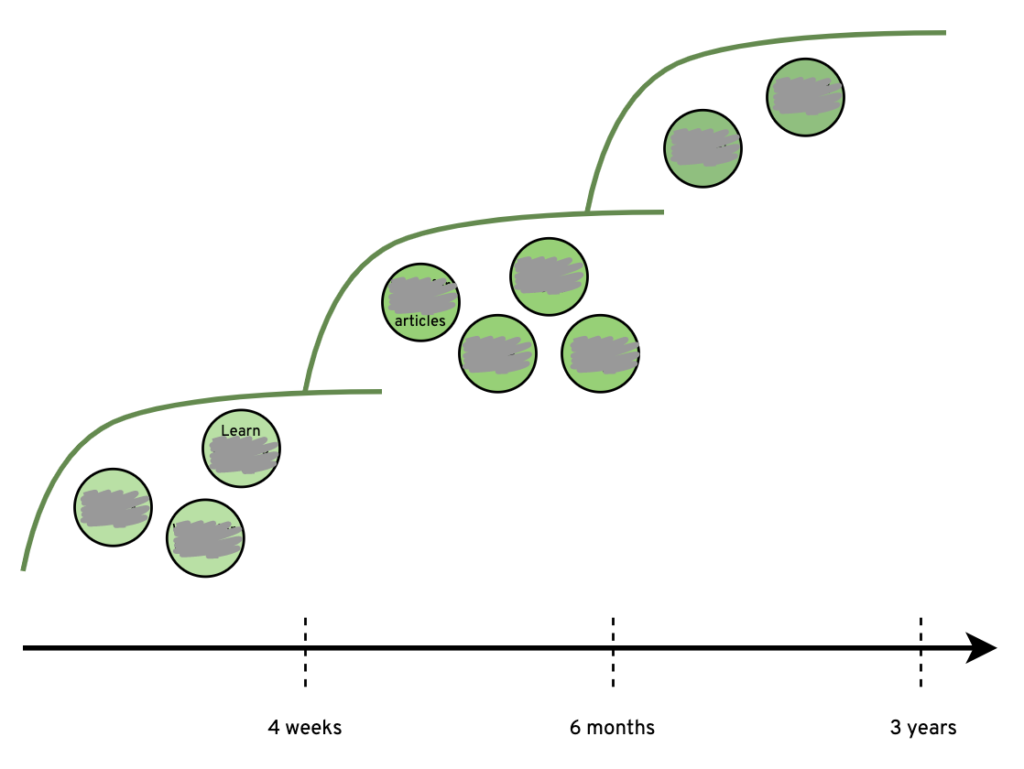The year that was
The end of the (Gregorian) calendar year is an apt time to reflect upon the year that was. There are many approaches on how to do this personal retrospective; my friend Johannes Thönes captured a few of them here. Another technique that I use is an adaptation of McKinsey’s Three Horizons of Growth. I’ve found that it works well in consort with a “what went well, what didn’t go well” retrospective technique. The data gathered from that technique drives the goals that are spread over the three horizons.
I use a scale of 4 weeks, 6 months, and 3 years for horizons one, two, and three, respectively. These are geometrically equidistant: horizons 2 and 3 cover periods 6 times longer than the previous horizon’s. I prefer using “4 weeks” to “one month” because the unit of measure itself exudes a sense of direction and focus.

The key thing here – which is lifted directly from the McKinsey model – is that the time axis does not mean when to pay attention to (and invest time/energy in) the goals for any horizon. Rather, it’s an indication of when the goals are likely to be accomplished. Over time, H3 goals would move to H2 and eventually H1 before being accomplished. This leads to a couple of insights:
A. I have to invest time/energy across all goals regularly
I would be a mistake to finish all H1 goals before turning to H2 goals. An H2 goal may be “Finish reading Anna Karenina”. It may take me all of 6 months to read that tome. If I don’t invest some time every day, it won’t get done within its stipulated horizon.
B. H3 (or H2) goals cannot be defined any more vaguely than H1 goals.
“Becoming a better person” is an excellent mission statement, however, it’s a poor goal. It’s not SMART. “Saving enough money to send my mom on her dream vacation” or “Finish a six+ month assignment in a foreign country” are better goals.
Why is the diagram redacted‽
So what are my goals? They are personal, of course. And I follow Amy Rigby‘s compelling advice that sharing one’s goal decreases one’s likelihood of achieving them!
Image credit: Anita Gould